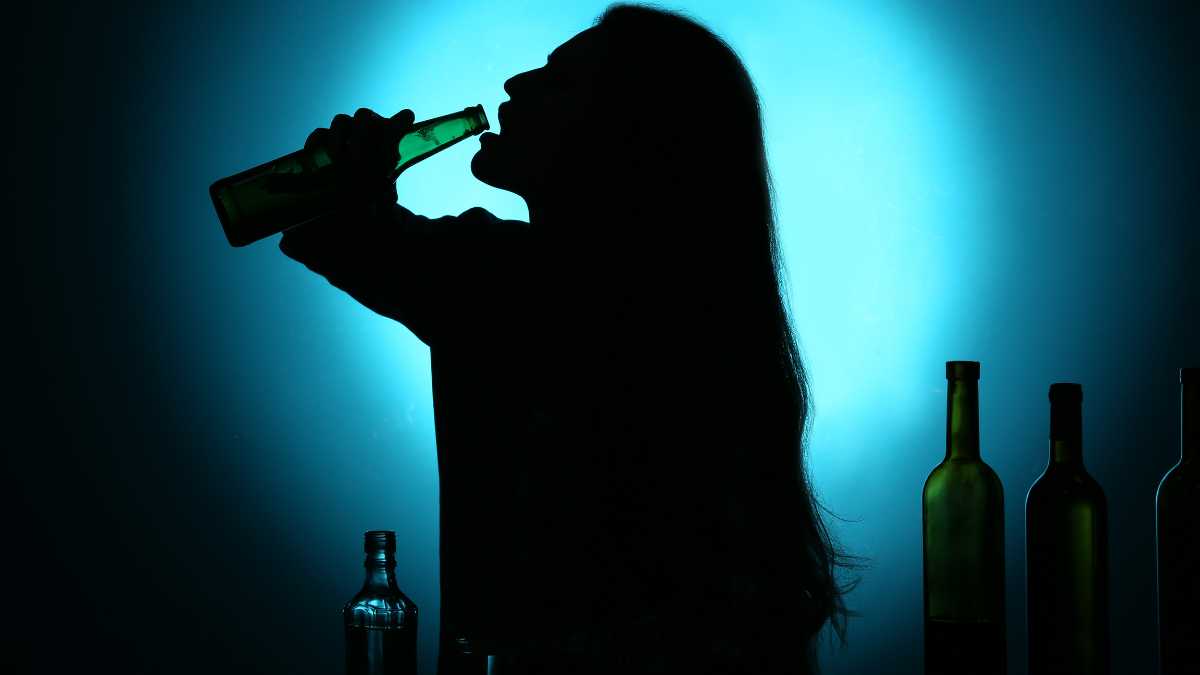Quitting alcohol abruptly, especially after heavy and chronic use, is dangerous. The main reason for this is alcohol withdrawal, which can be life-threatening and dangerous in itself. Therefore, tapering off alcohol safely from your system is the first step to alcohol use. When it is done under safe and controlled medical conditions (medically supervised detoxification), it is safer and easier.
In this blog, we will explore a step-by-step guide on how to taper off alcohol safely.
How to Taper Off Alcohol Safely?
Alcohol taper is how you wean off alcohol safely in order to avoid alcohol withdrawal symptoms. It is a safe alternative to going cold turkey, as it is done under medically supervised conditions. It can even be done at your home under medical direction. When you taper off alcohol, it means you slowly reduce alcohol intake over a period of time. The reason being, your body has gotten used to a certain level of alcohol, and quitting cold turkey (stopping alcohol intake suddenly) can give rise to gradual alcohol withdrawal symptoms - which can start off as minor discomfort only to turn life-threatening if not paid immediate attention to.
However, when you taper off alcohol gradually, you allow your body the chance to adapt to lower quantities and less frequent drinks. This way, you can manage both cravings and withdrawal symptoms.
There are two ways to taper off alcohol - direct taper and substitution taper. Direct taper is when you reduce alcohol from your body every day. This may not be necessarily effective for all. The other method, known as substitution taper, is when you switch to another beverage containing reduced alcohol content or a prescription medication as provided by the doctor.
Basically, here is the best way to taper off alcohol - in a step-by-step manner:
Step-by-Step Guide:
- Consult your doctor. If your doctor ascertains that it is safe for you to taper off at home, then you can begin tapering off alcohol safely at home.
- Begin by knowing how much you drink; 12 ounces of 5% beer, 5 ounces of 12% wine, and 1.5 ounces of 40% distilled spirits count as a standard drink.
- If you drink 20 standard drinks per day, then you can reduce 2 drinks from one day to the next until you reach zero.
- If you drink more than 20 standard drinks per day, then it becomes a little tricky. Here is how you taper off alcohol safely:
- Begin by spacing out drinks, especially during the middle of the day. Stabilize this kind of schedule for a week.
- Then, begin cutting down your drinks by 10% for over four days. If you begin experiencing withdrawal symptoms, then raise the dose to a level where you do not experience these symptoms. Keep it this way for a week.
- Then, begin to cut off 10% every week.
Before you begin tapering off alcohol:
- Clear your schedule so that you can dedicate at least 2 weeks to tapering off alcohol safely.
- Have someone with you when you are tapering off alcohol so that they can motivate you, distract you, and be a shoulder for you to lean on when things get overwhelming.
- Incorporate fruits and vegetables into your diet.
- Drink plenty of water or other electrolyte drinks like Gatorade.
- Try to engage in relaxing exercises like deep breathing exercises and yoga so that they can relax your mind and body.
- Have an emergency plan ready so that you can prevent alcohol withdrawal symptoms from becoming too severe.
Call Design for Recovery to Begin Your Healing Journey!
Reach out to our team to discuss sober living options and next steps toward a healthier routine.
Common Challenges When Tapering Off Alcohol and How to Overcome Them?
Tapering off alcohol in medical settings does not have many downsides. Since you are being supervised, you can manage your cravings and withdrawal symptoms effectively. However, when you self-wean from alcohol at home, it can have some downsides. The potential for withdrawal symptoms is always there, so this means they can worsen even before you seek medical care. Therefore, here are some things you can do to manage common challenges while tapering off alcohol:
- Even if you are tapering off alcohol at home, do it under a doctor’s direction.
- Look at the number of drinks you take each day. The standard drink - 12 ounces of 5% beer, 5 ounces of 12% wine, and 1.5 ounces of 40% distilled spirits counts as a standard drink. So, if you drink liquor, consider switching to drinks with reduced alcohol content, like light beer.
- Steadily reduce alcohol instead of going for the direct taper method.
- Eat a healthy, balanced diet. As alcohol can deplete your body of its nutrients, foods containing B vitamins like thiamine will combat these deficiencies.
- Stay hydrated. Drink plenty of water or other electrolyte beverages to prevent your body from getting dehydrated.
Signs You Should Seek Medical Supervision During Tapering
It is indeed safe to taper off alcohol at home, but your doctor must greenlight it before you go ahead. Besides, you must always be in contact with your doctor as you are tapering off alcohol at home. Basically, tapering off alcohol is generally recommended for those who are doing it for the first time and are likely to only struggle with mild withdrawal symptoms. However, for those who have relapsed before and where there is a potential of struggling with moderate to severe alcohol withdrawal symptoms, which can even turn fatal, medically supervised detox is recommended.
If you are struggling with any of these withdrawal symptoms, it is best to seek medical supervision during tapering:
- Intense cravings
- Anxiety and disorientation
- Mood swings
- Low mood
- Sleep troubles
- Nightmares
- High breathing rate
- High blood pressure
- Increased heart rate
- Tremors
- Seizures
- Psychosis (hallucinations and delusions).
Contact Design for Recovery Today!
Fill out our quick form to connect with a peer mentor and learn how our sober living community supports accountability, structure, and personal growth in recovery.
Benefits of Gradual Alcohol Reduction vs. Cold Turkey
While both methods aim to eliminate alcohol from the body, the gradual reduction approach offers significant advantages in terms of safety, comfort, and long-term success compared to the abrupt cold turkey method.
Gradual Alcohol Reduction:
Gradual alcohol reduction is when you seek to gradually decrease alcohol levels from your body after a period of heavy, chronic alcohol use. It is typically done under medical direction or in medical settings so that your cravings and withdrawal symptoms are effectively managed and reduced. It makes getting off alcohol smoother.
Cold Turkey Method:
Quitting alcohol cold turkey is stopping alcohol abruptly. This is not recommended. Alcohol is a central nervous system (CNS) depressant that relaxes you by slowing down your brain activity. So, over a period of time, your mind and body get used to a certain level of alcohol to function properly - this is known as physiological and psychological dependence.
If you suddenly stop drinking or go cold turkey, your CNS does not quickly adapt to this sudden change and can go into an excitatory mode, leading to severe and even fatal alcohol withdrawal symptoms.
Support Systems and Resources to Help You Successfully Taper Off Alcohol
When you are weaning off alcohol at home, you need to have someone over with you. Invite your family or other loved ones who can motivate you to keep going even if things become challenging. They can be a shoulder to lean on when things become overwhelming. They also offer some much-needed distractions when you need them. As tapering off alcohol at home carries a risk of withdrawal symptoms, then they can help you in getting the medical care you need. You can also attend Alcoholics Anonymous (AA) recovery meetings where you can learn from shared learning and experiences as well as receive support from those who are on similar recovery journeys as you.
You also need to be in contact with licensed and trained mental health providers who specialize in substance use challenges so that you receive the medical direction and supervision you need.
As alcohol withdrawal has the potential to lead to suicidal thoughts and behaviors, have national suicide prevention lifeline numbers available with you. For instance, like 9-8-8 in the U.S. You can also contact emergency providers, like 9-1-1 in the U.S.
- How to Taper Off Alcohol Safely?
- Common Challenges When Tapering Off Alcohol and How to Overcome Them?
- Signs You Should Seek Medical Supervision During Tapering
- Benefits of Gradual Alcohol Reduction vs. Cold Turkey
- Support Systems and Resources to Help You Successfully Taper Off Alcohol
Begin Lasting Sobriety Now!
Frequently Asked Questions
Tapering off alcohol means gradually reducing the alcohol content in your body so that your body can adjust to lower levels of alcohol content until it reaches zero.
You can wean off alcohol safely by reducing the number of drinks by 10% over a period of four days under a doctor’s guidance.
Typically, tapering off alcohol takes two weeks. It can take a little longer for your mind and body to get used to sobriety, however.
Yes, tapering off alcohol is definitively safer than quitting cold turkey.
Common alcohol withdrawal symptoms during alcohol tapering are nausea, vomiting, headaches, loss of appetite, rapid breathing, high blood pressure, higher heart rate, body tremors, anxiety, confusion, mood swings, psychosis, and seizures, among others.
If you begin to struggle with moderate to severe alcohol withdrawal symptoms while tapering off alcohol, then seek professional help immediately.
https://www.who.int/news-room/fact-sheets/detail/alcohol
https://www.niaaa.nih.gov/publications/brochures-and-fact-sheets/understanding-alcohol-use-disorder
https://www.ncbi.nlm.nih.gov/books/NBK441882/
https://www.uhsussex.nhs.uk/wp-content/uploads/2023/09/How-to-reduce-alcohol-intake.pdf







Written By
David Beasley